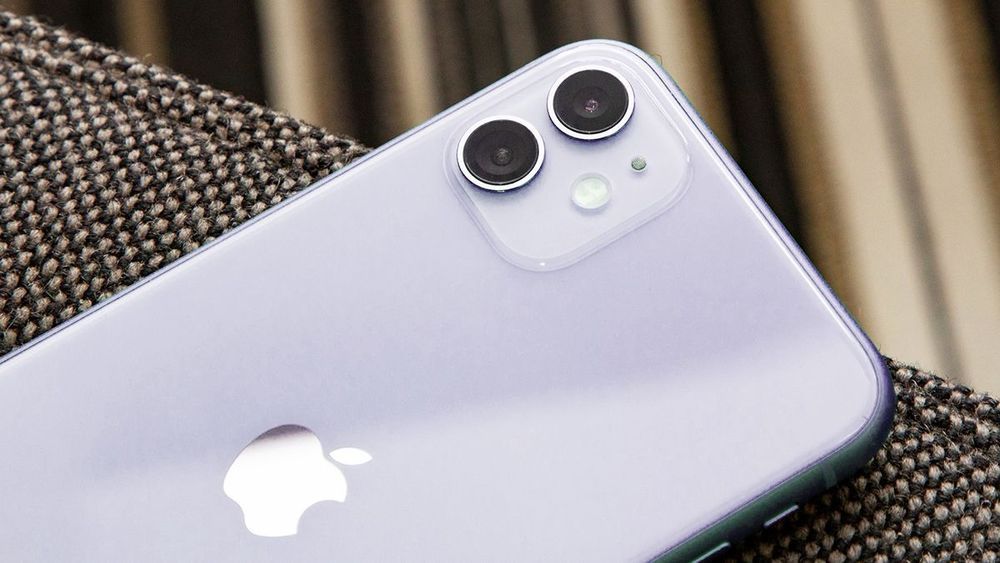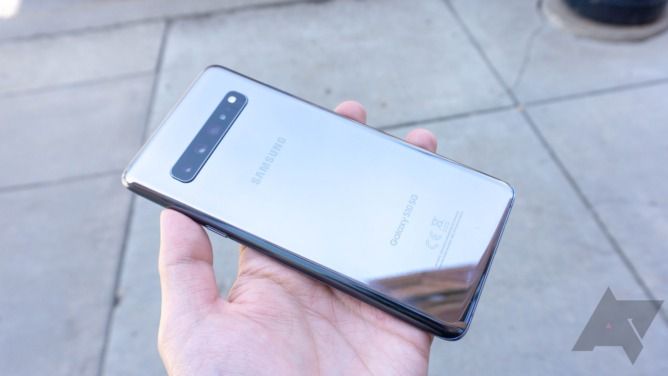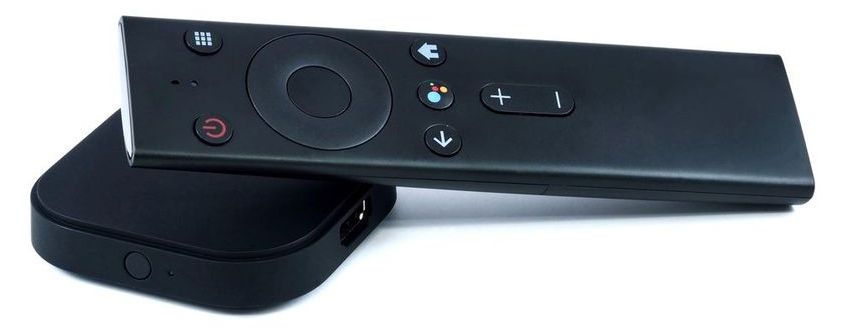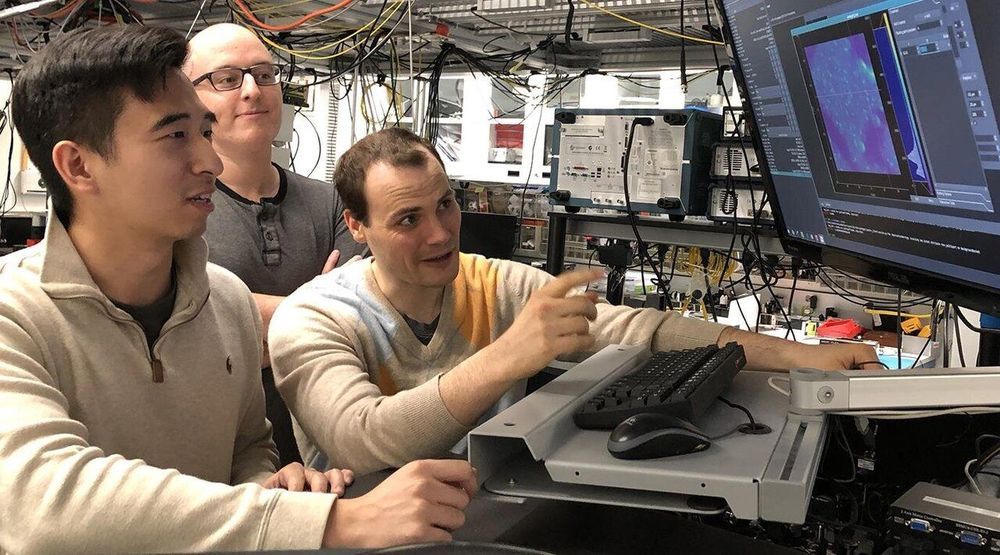Apple is said to be putting together a satellite network that could help iPhones and other Apple gear stay connected.
Category: mobile phones – Page 151
Huawei has already confirmed that its new P40 series phones will be unveiled next March in Paris, France, revealing that we’re in for a never-before-seen design for the new handset. That’s a wild claim considering that you can’t really do much more with phone design nowadays. Foldable phones are already a thing, and the first prototypes of devices that feature in-display cameras were revealed months ago — the latter is the holy grail we need for perfect all-screen designs. Huawei didn’t explain what design novelties it has in mind for the upcoming P40 series, but the phone seemingly just leaked and we might have an answer for you.
Samsung has been testing Android 10 on its Galaxy S10 series extensively, with one beta update chasing the other over the last few weeks. The company is apparently finally satisfied with the software, as it has just started rolling out the stable release with version 2.0 of One UI in tow. It looks like it’s only coming to some people in Germany, but it can’t take too long until it arrives at more customers.
From lab grown meat to object-manipulating robots, the tech that will transform our future is bound to be much bigger than the internet or smart phone.
The power shift continues.
Uber, the world’s largest taxi company, owns no vehicles. Facebook, the world’s most popular media owner, creates no content. Alibaba, the most valuable retailer, has no inventory. And Airbnb, the world’s largest accommodation provider, owns no real estate. Something interesting is happening.
Since the Industrial Revolution, the world has developed complex supply chains, from designers to manufacturers, from distributors to importers, wholesalers and retailers, it’s what allowed billions of products to be made, shipped, bought and enjoyed in all corners of the world. In recent times the power of the Internet, especially the mobile phone, has unleashed a movement that’s rapidly destroying these layers and moving power to new places.
The Internet is the most powerful mechanism we can imagine to match perfectly individuals that need something, and people with something to offer. The moment started slowly by reducing complexity and removing the middle layer in the late 1990s. From insurance to early PC makers like Dell to travel agents, this time seemed to be an age where “direct” became a desirable moniker. This time seemed to favor scale and efficiency over service or brand, for commodities like insurance cover or processing power, the overheads of sales, marketing and retail footprint were stripped away.
Human intelligence is not linear. Machine intelligence can be summed up in three words; efficiency, efficacy and trade off. The more we automate human thinking, the less we need humans. Get it?
From the subtle advancements in technology to the birth of SKYNET!!!! Join us as we explore facts about the Technological Singularity.
11. What is the Technological Singularity?
What’s that? You don’t know what it is? No worries, it is a pretty scientific term.
To quote Wikipedia, the Technological Singularity, “is a hypothetical future point in time at which technological growth becomes uncontrollable and irreversible, resulting in unfathomable changes to human civilization.“
What’s more, this is NOT a new theory or idea. And it honestly wasn’t proposed by various sci-fi movies. In fact, it was proposed by a book in 1993 via Vernor Vinge in The Coming Technological Singularity. What’s more, while this may seem like a “sci-fi future”, there are many who actually believe that not only will this come, but it could come to bear as soon as 2050.
10. Where Are We Now In The Technological Singularity?
To fully understand how the Technological Singularity could happen, we need to understand where we are as a society that could lead us to the Technological Singularity future that many fear.
9. Intelligence Boom
The key word here to note is “IntelligenceBoom”. No, I don’t mean like our own brains exploding (that would be bad…), but rather, an boom of potential via Artificial Intelligence. This is one of the potential “outcomes” of a Technological Singularity.
Think of it like this. Every generation of computer we make is technically better than the next, right? The difference between what we do and what an Intelligence Boom is, is that the A.I. is the one “making” the next generation. That’s a scary thought, huh? And that’s actually a reason why many are opposed to the research on super-intelligent (and always evolving) A.I’s. This included the late Stephen Hawking and current eccentric Billionaire Elon Musk. They feel that humanity will be doomed because of A.I’s. Whether it be through Intelligence Boom, or something of our own making.
8. Making A “Better Tomorrow“
There is another way that many dispute the Technological Singularity will come via A.I. and that’s simply by creating an A.I. ourselves that goes far beyond what we intended it to be. Which may not be as far-fetched as you might think.
If I were to say the names Alexa, Siri, and Watson, you’d recognize them as various machines with various intelligence, right? Well technically, they’re all A.I., just with different levels of intelligence. Siri came first and could react to certain things on your iPad or iPhone. Some think that we are very close to that point. Including a man named Ray Kurzweil, who believes that we could be at the Singularity point by 2045 at the earliest.
7. The Predictions Of Ray Kurzweil Part 1
If you’re not familiar with ray kurzweil, you honestly should read up on him, he’s not just another guy predicting the end of civilization, he’s actually an engineer at Google, and sees himself as a Futurist. One who has made predictions in the past about technologies advances with accuracy.
6. Robotics
When you think of the “future” that humanity “wants” and that various sci-fi and movies have “predicted”, the obvious things you see are robots and people with robotic appendages. Let’s look at robots first. The Technological Singularity notes that as robots get more advanced, humans will become less and less important. All part of the “A.I. Overlord” scenarios if you will. Then again, WE could be the robots, not unlike another robotic race with brilliant intelligence: The Borg.
5. Artificial Limbs and Cyborgs
One of the biggest and most worrying things about a person in regards to their life is the chance that they could lose a limb. The loss of a limb is something that cannot be overcome simply.
4. The Predictions Of Ray Kurzweil Part 2 ( ray kurzweil 2019)
But again, the question becomes, “How far are we from that future?” If Ray Kurzweil is to be believed, not as far as you think. For he believes a key part of the singularity will come in 2029, a mere decade in the future.
3. 2049
Today, Google is announcing that Android 10 is arriving on Android TV, and it’s about as bland of an update as they come. Primarily, it’s just the performance and security benefits of Android 10, without a single new user-facing feature. But at the bottom of Google’s blog post, the company hints at why: Google’s busy prepping for the “next-generation of Android TV,” starting with the miniature box above.
Google says this new ADT-3 dongle is a full-fledged Android TV platform, with a quad-core ARM Cortex A53 CPU, 2GB of DDR3 memory, and the ability to output 4K HDR content at 60 frames per second over its HDMI 2.1 port.
After decades of miniaturization, the electronic components we’ve relied on for computers and modern technologies are now starting to reach fundamental limits. Faced with this challenge, engineers and scientists around the world are turning toward a radically new paradigm: quantum information technologies.
Quantum technology, which harnesses the strange rules that govern particles at the atomic level, is normally thought of as much too delicate to coexist with the electronics we use every day in phones, laptops and cars. However, scientists with the University of Chicago’s Pritzker School of Molecular Engineering announced a significant breakthrough: Quantum states can be integrated and controlled in commonly used electronic devices made from silicon carbide.
“The ability to create and control high-performance quantum bits in commercial electronics was a surprise,” said lead investigator David Awschalom, the Liew Family Professor in Molecular Engineering at UChicago and a pioneer in quantum technology. “These discoveries have changed the way we think about developing quantum technologies—perhaps we can find a way to use today’s electronics to build quantum devices.”
What if developing a 3D gaming world were as easy as snapping pics with your phone? Nvidia researchers recently developed an AI system capable of predicting a complete 3D model from any 2D image.
Called “DIB-R,” the AI takes a picture of any 2D object – an image of a bird, for example – and predicts what it would look like in three dimensions. This prediction includes lighting, texture, and depth.
A road stretching to more than 80% of the world – russia proposes a superhighway that will take you from europe to the united states!

According to a report in The Siberian Times, Russian Railways president has proposed a plan for a massive trans-Siberian highway.









